5-Minute Daily Mobility Routine for Desk Workers
Working at a desk for hours on end has become the new normal for millions of Americans, but our bodies weren’t designed for this sedentary lifestyle. If you’re reading this, chances are you’ve felt that familiar tightness in your shoulders, the nagging lower back pain, or those stiff hips that make getting up from your chair feel like you’re decades older than you actually are.
Here’s the good news: you don’t need to spend hours at the gym or endure painful stretching sessions to feel better. A simple 5-minute daily mobility routine can dramatically improve how you feel and move, even if you’re glued to your desk for most of the day.
Why Desk Workers Desperately Need Daily Mobility Work
Recent research published in the Journal of Sports Sciences examined 22 studies on mobility training and found that 20 of these studies reported significant benefits from incorporating regular mobility work. But here’s what makes this particularly relevant for desk workers: research shows that repetitive motion, poor posture, and staying in the same position can cause or worsen musculoskeletal disorders.
When you sit at a desk all day, several things happen to your body:
Your hip flexors shorten and tighten from being in a constantly flexed position. This creates a cascade effect that can pull your pelvis forward and contribute to lower back pain.
Your shoulders round forward as you lean toward your screen, creating what’s commonly called “tech neck.” This position weakens your upper back muscles while tightening your chest.
Your glutes essentially “turn off” because they’re not being used. When you’re sitting in a chair all day, you’re completely supported, so there’s not much reason for your hip muscles to fire. Your body saves energy by simply shutting them off.
Your ankles lose mobility from being in the same position for hours, which might seem minor but actually affects your entire kinetic chain.
The Science Behind This 5-Minute Solution
You might be wondering: can just 5 minutes really make a difference? The research says yes. A 2024 systematic review found that regular mobility training with a minimum of two to three times a week appears to be more important than volume per session.
Physical therapist Winnie Yu, DPT, CSCS, explains that mobility training allows you to temporarily improve range of motion, blood flow to the muscle groups surrounding targeted joints, and neuromuscular control through the full range of motion.
The key is consistency over duration. As little as five to ten minutes a day will help you progress, and the more frequently you practice mobility, the more improvements you’ll see.
Your 5-Minute Daily Desk Worker Mobility Routine
This routine targets the three most problematic areas for desk workers: hips, upper back/shoulders, and ankles. Each movement serves a specific purpose and can be done right at your desk or in a small space.
Movement 1: Cat-Cow Spinal Waves (1 minute)
What it does: Mobilizes your entire spine and counters the forward head posture from looking at screens.
How to do it:
- Start on your hands and knees, or adapt this in your chair
- Slowly arch your back, lifting your chest and looking up (Cow)
- Then round your spine, tucking your chin to chest (Cat)
- Move slowly and smoothly, like a wave through your spine
- Focus on moving one vertebra at a time
Desk modification: Sit tall in your chair, place hands on your knees, and perform the same spinal movement.
Movement 2: Hip Flexor Release with Rotation (1 minute)
What it does: Releases tight hip flexors and adds rotational movement that your spine rarely gets while sitting.
How to do it:
- Step your right foot forward into a lunge position
- Keep your back leg straight and feel the stretch in the front of your left hip
- Place your right hand on the ground and rotate your left arm up toward the ceiling
- Hold for 15 seconds, then switch sides
- Repeat 2-3 times per side
Desk modification: Stand beside your desk, place one foot on your chair, and perform a standing hip flexor stretch with arm rotation.
Movement 3: Thoracic Spine Extension (1 minute)
What it does: Opens up your chest and strengthens the muscles between your shoulder blades that get weak from hunching forward.
How to do it:
- Clasp your hands behind your head
- Squeeze your shoulder blades together
- Gently extend your upper back, looking slightly upward
- Hold for 5 seconds, return to neutral
- Repeat 8-10 times
Office tip: This can be done in your chair. Just make sure you’re extending from your upper back, not your neck.
Movement 4: Deep Squat Hold with Ankle Mobilization (1 minute)
What it does: This exercise is not only a heavenly hip opener, but it’s also awesome for ankle mobility. Since tight ankles can limit your range of motion during squats, ankle mobility exercises are especially important.
How to do it:
- Stand with feet slightly wider than hip-width
- Lower into the deepest squat you can manage
- If you can’t get low, hold onto your desk for support
- Once in the squat, gently rock side to side and forward and back
- Focus on keeping your heels down and chest up
Modification: If you can’t squat deeply, sit on the edge of your chair and perform ankle circles and calf raises instead.
Movement 5: Neck Release and Shoulder Rolls (1 minute)
What it does: Directly addresses tech neck and releases shoulder tension.
How to do it:
- Gently drop your right ear toward your right shoulder
- Hold for 15 seconds, then switch sides
- Perform 5 slow, controlled shoulder rolls backward
- End with 5 chin tucks (pull your chin back like you’re making a double chin)
How to Make This Routine Stick
The best mobility routine is the one you’ll actually do consistently. Here are proven strategies to make this a habit:
Start with just one movement. If 5 minutes feels overwhelming, pick one exercise and do it every day for a week. Once that becomes automatic, add the next movement.
Link it to an existing habit. Do this routine right after you brush your teeth in the morning, or immediately after you sit down at your desk.
Set a recurring alarm. Most people find that doing this routine at the same time each day helps it become automatic.
Focus on how you feel afterward. Pay attention to the immediate relief you get. This positive reinforcement will help motivate you to continue.
When You’ll Start Noticing Results
Most people report feeling immediate relief after just one session, but the real magic happens with consistency. Here’s what to expect:
Week 1: You’ll notice immediate tension relief after each session and start to become more aware of your posture throughout the day.
Week 2-3: Movements that felt difficult initially will become easier. You might notice less stiffness when you stand up from your desk.
Month 1: Research shows that individuals who maintain their fitness demonstrate both good physical health and better cognitive function, with older adults who performed better on mobility tests also doing better on cognitive tests. You’ll likely experience improved focus and less fatigue.
Month 2-3: Your posture will naturally improve, and you’ll move with more ease throughout your day.
Advanced Tips for Maximum Benefit
Once you’ve mastered the basic routine, here are ways to enhance your results:
Add breathing. Coordinate your breath with movement. Inhale as you extend or open, exhale as you flex or close.
Increase hold times. While 5 seconds is the minimum for effective holds, taking it up to 20 seconds can provide even greater benefits.
Do mini-sessions throughout the day. Integrating mobility exercises into daily routines doesn’t always require dedicated workout sessions. Take short breaks throughout the day to perform simple mobility exercises.
Pay attention to your trouble spots. If your shoulders are particularly tight one day, spend extra time on the thoracic extension and neck releases.
Common Mistakes to Avoid
Skipping days because you “don’t have time.” Five minutes is less time than it takes to check social media. Prioritize your health.
Pushing too hard too fast. Mobility work should feel good, not painful. Work within your comfortable range and let improvements come naturally.
Only doing this when you’re in pain. Prevention is always better than treatment. Make this routine a daily habit, not an emergency intervention.
Forgetting to breathe. Deep breathing enhances the relaxation response and helps your muscles release more effectively.
The Bottom Line
Your body is incredibly adaptable, but it needs your help to counteract the effects of prolonged sitting. This 5-minute routine isn’t just about feeling better today—it’s an investment in your long-term health and mobility.
Research found that those who had more difficulty with simple movement tests had an increased likelihood of all-cause mortality as they aged. The good news? Small, consistent actions now can have profound effects on your future quality of life.
Don’t wait until pain forces you to pay attention to your body. Start this routine tomorrow morning, and within just a few weeks, you’ll wonder how you ever functioned without it. Your future self will thank you for taking these five minutes each day to move, stretch, and counteract the demands of modern desk life.
Remember: the best time to start was yesterday. The second-best time is right now.
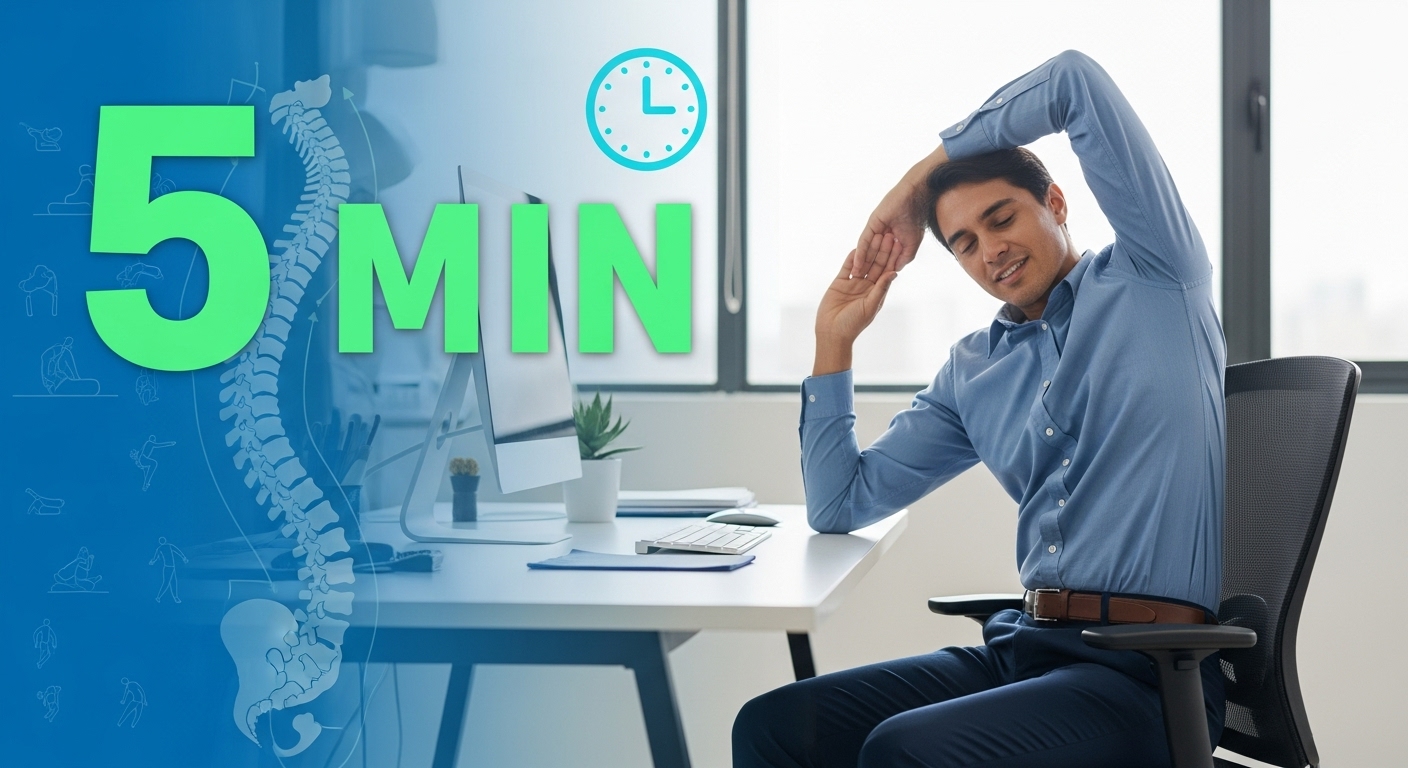


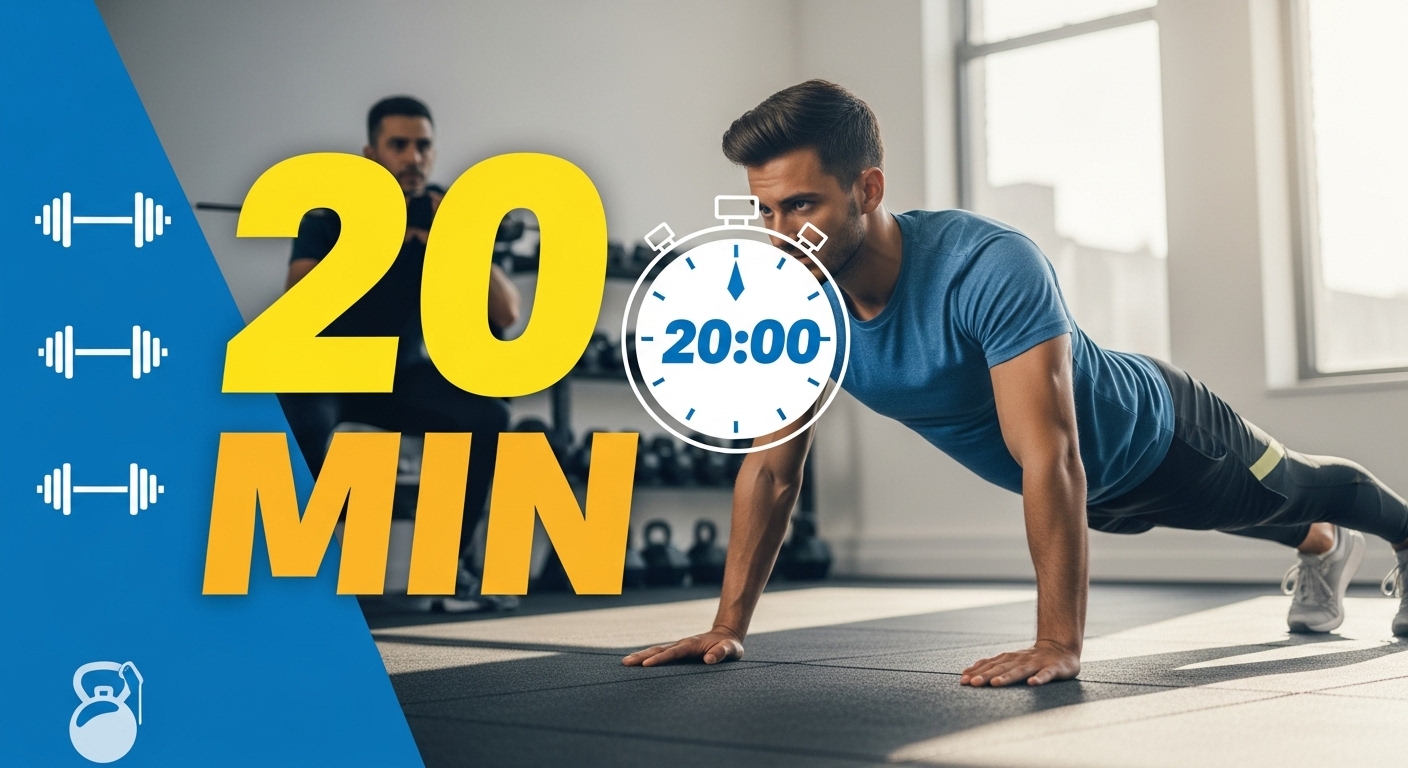


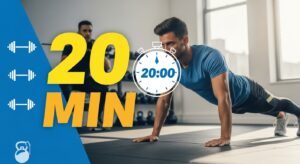



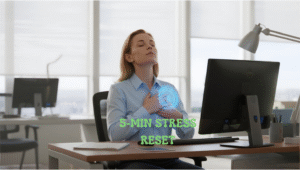
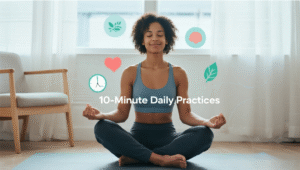


Post Comment